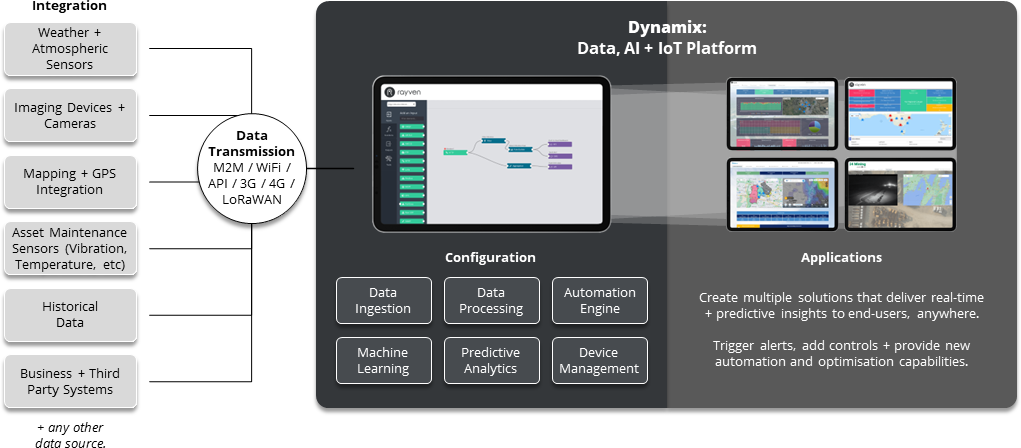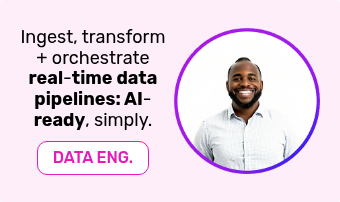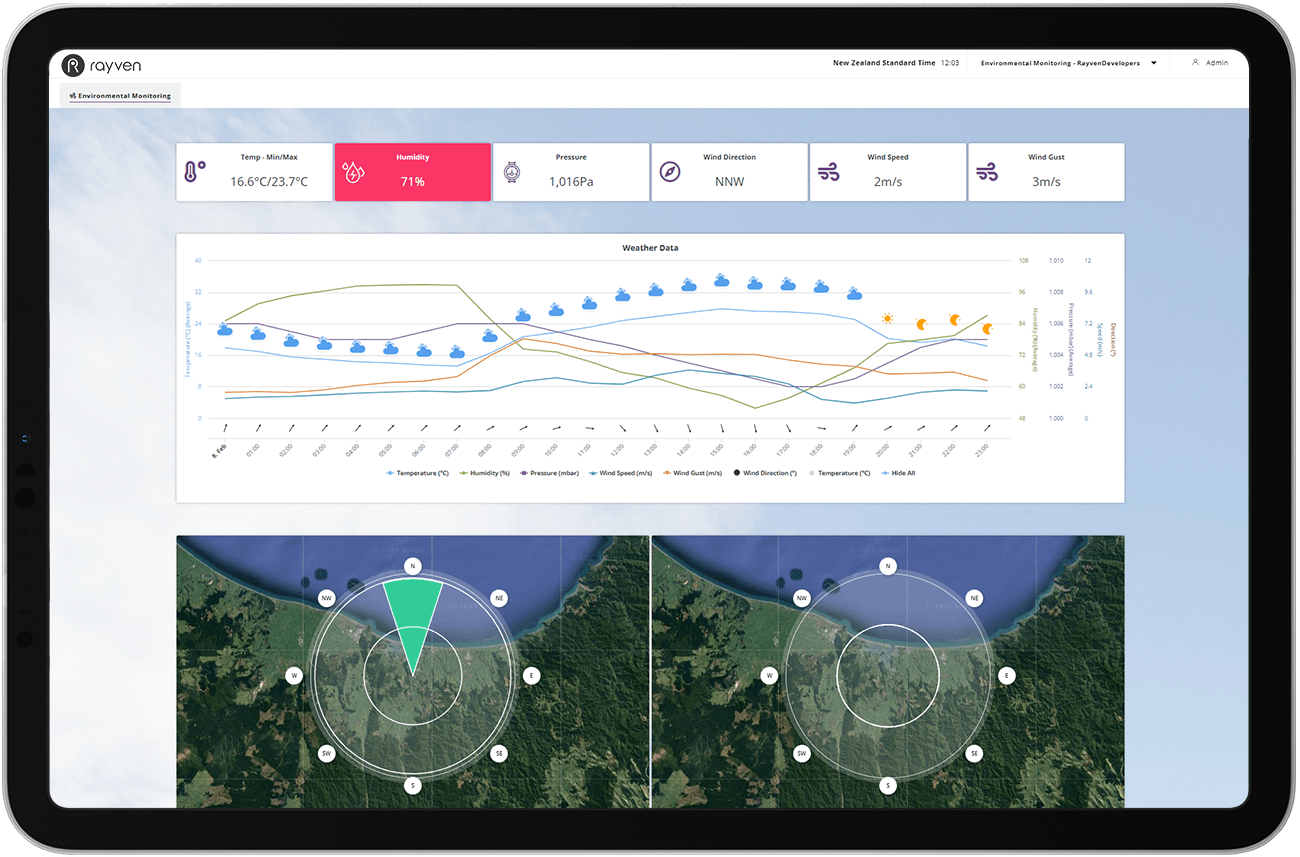Public Toilet Monitoring Solutions.
Get real-time insights, improve management + seize efficiencies, simply.
Easily customise and deliver a Public Toilet Monitoring solution that delivers efficiency, maintenance, ESG + bottom-line benefits, fast.
Improve the way you mange public toilet sites + deliver clear bottom-line benefits.
Public toilets are geographically-dispersed assets that require regular site visits and maintenance. By using IoT technologies, real-time and predictive analytics; you can get accurate usage data, understand maintenance needs, improve sustainability + reduce costs, remotely.
Use our Rayven Platform's Public Toilet Monitoring solution template as your starting point and integrate infield devices, third-party systems, and assets to deliver real-time and predictive insights on performance and how it can be improved.
Our all-in-one, easy-to-use technology comes complete with universal integration, machine learning, automation, and AI capabilities; enabling you to improve maintenance, sustainability + service user experience, simply.
Remote, real-time public toilet monitoring.
Retrofit sensors or install Smart assets and easily integrate them with our central IoT platform to get accurate, real-time metrics on usage, water use, maintenance needs + more, without ever having to visit the site.
Set thresholds, trigger alerts + take control.
Set-up thresholds and trigger alerts, moving from scheduled to condition-based management + maintenance. Use automation to alert people to problems, fix them remotely, and more.
Build interactive dashboards + drill into trends.
Build custom dashboards + reports to explore real-time and historical performance. Investigate the causes of data points, analyse different trends, and interrogate Big Data sets, simply.
Add custom AI + universal automation.
Our solution enables you to utilise inbuilt predictive analytics with your own and third-party data to predict outcomes. Achieve sustainability, performance + operational goals, whilst reducing costs.
Fits all existing
hardware + technologies.
Our Smart Public Toilet Monitoring solution integrates with any machinery, system, sensor, or data store - guaranteed. Use it as a centralised real-time data processing + visualisation platform.
Monitor more: add weather, bins, parking - anything.
Incorporate different in-field sensors and data sources to develop a complete, real-time view of operations + sites. Enhance the way you monitor and manage a range of services all-at-once.
Rayven has free + low-cost options, making it affordable for every business.
How your Public Toilet Monitoring solution is put together.
New and existing data, (both real-time and historical), alongside custom logic, thresholds, and predictive analytics is used to create your custom Smart Public Toilet Monitoring solution.

Our solution can handle data from anywhere in any format, and at all levels:
Level 1 Data: Manual entry of data via custom forms built within our solutions.
Level 2 Data: Bespoke spreadsheet ingestion via FTP or manual uploads.
Level 3 Data: Integration of real-time data from OT / IT systems and corporate systems.
Level 4 Data: Real-time integration with in-field technologies, asset systems + in-field sensors.
Your Public Toilet Monitoring solution will integrate with anything, including:
Smart Public Toilet Monitoring solution FAQs.
Question: What is a Smart Public Toilet Monitoring solution, and why is it important?
Public toilets are essential amenities in both remote and urban areas, but their condition can sometimes be less than ideal. A public toilet monitoring solution, which utilises Internet of Things (IoT) technology, aims to address this issue by ensuring that facilities are clean, well-stocked, and ready to use, as well as reducing their environmental impact and making them cheaper to manage and maintain.
Smart public toilets work by equipping them with sensors that can monitor different aspect of the site and assets, as well as surrounding environmental or any other measures. Operators can given access to applications and dashboards - as well be reached via alerts - that display real-time performance, can predict outages or problems, or which can indicate that a site visit is urgent (such as when minute-by-minute water use rockets).
By adopting Smart Public Toilet Monitoring solutions, government and private businesses can significantly improve the user experience of public restrooms, as well as improving resource usage, improving operational efficiency, and reducing maintenance and management costs.
Question: What's involved in a Smart Public Toilet Monitoring solution?
Together, these components form together to create an integrated Smart Public Toilet Monitoring solution that can improve resource efficiency, reduce maintenance costs, and enhance service user experience:
- Sensors: Sensors can be used to detect the level of consumables, as well as monitor the cleanliness, water and energy use, as well as surrounding environmental measures of the facility.
- Data collection + transmission: These sensors collect data continuously or at set intervals. The data is then transmitted wirelessly to a central server or platform via wireless networks like LoRaWAN (Long Range), NB-IoT (Narrowband IoT), or regular Wi-Fi and phone networks. Advanced platforms can handle data from thousands of sensors simultaneously.
- Real-time data analysis: Advanced platforms (like Rayven's!) analyse the data to generate real-time insights and allow constant remote monitoring. Patterns and trends can be identified and delivered to people via data visualisations and dashboards.
- Mapping: Visualisation tools can provide real-time maps as well as predicted needs and future statuses based on historical data. These maps can be updated in real-time, allowing businesses and public administrators to make informed operational decisions.
- Responsive actions + alerts: In advanced setups, the system can be integrated with communication systems and in-field assets to deliver instant, automated optimisations and operational changes without having to put employees at risk.
- Machine Learning + predictive analytics: Use an advanced platform's inbuilt capabilities to analyse multiple data sources, both real-time and historical data, to predict future needs. Use it to make better decisions both via human and AI.
- Application: Some platforms can support worker and public-facing apps and dashboards that deliver critical insights in real-time. These enable those responsible for monitoring and reporting on problematic areas to better manage sites, as well as supply necessary data to connected parties.
Question: How can real-time public toilet monitoring help government organisations + businesses?
Real-time public toilet monitoring offers a range of benefits for both government organisations and businesses, from improving public health and employee satisfaction to reducing costs and ensuring regulatory compliance:
For government organisations, real-time monitoring can:
- Optimise maintenance schedules: Data collected from sensors can help optimise cleaning and maintenance schedules based on actual usage patterns, rather than relying on fixed schedules - adopt condition-based and predictive maintenance models.
- Improve public health + safety: Regular maintenance and immediate attention to cleanliness can prevent the spread of diseases and create a safer environment for the public.
- Ensure facility availability: Immediate alerts for issues like clogs or leaks can help maintain the availability and usability of public toilets, reducing the inconvenience for users.
- Energy +water savings: Real-time monitoring allows for precise control over resources, ensuring appropriate allocation and alerting you instantly to urgent maintenance needs, e.g. a leaking tap.
- Data-driven decision-making: Real-time monitoring systems can collect data on various parameters such as light usage, energy consumption, and even usage patterns. This data can be analysed to make informed decisions regarding infrastructure improvements, urban and operational planning.
- Sustainability: By optimising the operations, real-time monitoring can contribute to sustainability goals and help reduce the carbon footprint of public infrastructure.
- Theft + vandalism detection: Real-time alerting or the examination of historical data can enable you to quickly identify sites and put in additional security measures, such as CCTV, to deter or apprehend offenders.
- Enhance employee satisfaction: Ensuring clean and well-stocked restrooms can significantly enhance employee satisfaction and morale.
- Comply with regulations: Many industries are subject to regulations that require specific sanitation standards. Real-time monitoring can help businesses comply with these regulations more easily.
- Reduce costs: Just like for government organisations, businesses can also optimise maintenance schedules and reduce costs associated with over-maintenance or emergency repairs.
- Improve facility management: For businesses that manage multiple facilities, real-time monitoring can provide a centralised view of the condition of restrooms across all locations, simplifying facility management.
Question: What are the key features to look for in a Public Toilet Monitoring solution?
When purchasing or creating a Smart Public Toilet Monitoring solution, it's crucial to look for:
- Real-time data processing: Get immediate analysis and feedback on operational and maintenance status, and get instant alerts of problems.
- Scalability: Ability to handle data from multiple sensors, assets and third-party systems spread across large areas. Expandability to accommodate growth in monitoring infrastructure and different sites - without blowing out costs.
- Data analytics platform: Advanced tools for visualising trends and patterns. Predictive analytics for anticipating potential issues.
- Integration: Compatibility with other IoT systems, hardware, legacy business systems, as well as external data sources and SaaS. API support for custom integrations and applications.
- Geo-tagging +mapping: Precise location data and visualisation capabilities using maps for spatial understanding of deployments.
- Secure data transmission: Encryption and secure protocols to protect data integrity. Measures to prevent unauthorised access.
- Alerting +notification system: Customisable thresholds for alerts. Multiple notification channels (email, SMS, app notifications).
- Remote control, configuration + device management: Ability to adjust sensors and other assets remotely. Over-the-air updates for firmware and software.
- Cloud connectivity + storage: Data stored in a secure cloud environment. Easy access to historical data and trends.
- User-friendly, fully-customisable interfaces: Intuitive dashboards and reporting tools, tailorable for different uses. Mobile access for on-the-go monitoring.

























































